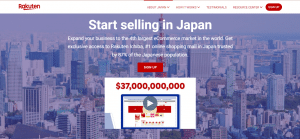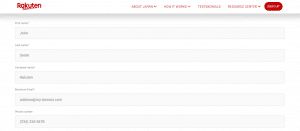The Ultimate Guide to Selling on Rakuten

Rakuten is one of the world's largest e-commerce platforms, offering a wide range of products and services to customers globally. With a significant presence in Japan and expanding international operations, Rakuten provides sellers with a powerful platform to reach a large customer base. Selling on Rakuten can be highly beneficial for businesses looking to expand their online presence and increase sales.
In this article, we will explore the process of selling on Rakuten and provide you with valuable insights and tips to effectively navigate the platform.
What Is Rakuten?
Rakuten is a Japan-based e-commerce platform. It was founded in 1997 and has since grown into a global marketplace. It offers a wide range of products, including electronics, fashion, home goods, beauty, and more.
Rakuten operates with a unique business model that incorporates partnerships with various retailers and sellers, allowing them to showcase their products to a vast customer base.

Today, Rakuten has a strong presence in Asia, Europe, and the United States, making it an attractive platform for sellers who want to tap into international markets.
Sellers on Rakuten enjoy several key features and benefits that make it an appealing platform for their business. These include access to a large customer base, robust marketing and promotional tools, customizable store designs, comprehensive seller support, and a reputation for quality and reliability.
Rakuten's emphasis on customer satisfaction and a user-friendly interface creates an ideal environment for sellers to showcase their products and build a loyal customer base.
Rakuten Seller Sign-Up Processes: US vs. International Requirements
When it comes to the sign-up process for sellers, a notable divergence exists between the United States and other countries. In the US, sellers are mandated to possess a legally registered business to register successfully. This requirement ensures compliance with local regulations and provides a framework for accountability.

Conversely, in many other countries, the sign-up process may not demand formal business registration, allowing individuals to engage in commerce more freely. However, such leniency may present challenges in terms of consumer protection and taxation. These disparities reflect the varying regulatory approaches and the balance between facilitating entrepreneurship and upholding legal standards in different jurisdictions.
How do I Become a Rakuten Seller?
Becoming a Rakuten seller opens up exciting opportunities in the world of e-commerce. Here’s how you can get started..
1. Register as a Rakuten seller.
Visit the Rakuten website and sign up for a seller account. Provide the necessary information, including your business details, contact information, and any relevant documents they may require.
2. Select the right subscription plan.
Rakuten offers different subscription plans for sellers. Evaluate the features and benefits of each plan and choose the one that aligns with your business goals and budget. Consider factors such as commission rates, access to marketing tools, and customer support when making your decision.

3. Upload product listings and images.
Once your store is set up, start uploading your product listings and accompanying images. Ensure that your product descriptions are accurate, detailed, and highlight the unique selling points. High-quality images can significantly impact a customer's buying decision, so make sure to provide visually appealing product photos.
4. Optimize product descriptions and keywords.
To improve your product's visibility in Rakuten's search results, optimize your product descriptions and use relevant keywords. Research popular search terms related to your products and incorporate them strategically into your listings. This optimization can increase your chances of attracting potential buyers.
Related Article: How to Optimize Amazon Product Listings
5. Determine your pricing and shipping strategies.
Determining competitive pricing and shipping strategies is crucial to stand out among other sellers. Consider factors such as your product's value, market demand, and shipping costs. Strike a balance between attractive pricing and maintaining a reasonable profit margin. Offering various shipping options can also cater to different customer preferences.

Pros and Cons of Selling on Rakuten
Selling on Rakuten offers advantages for business growth, However, challenges to consider are competitiveness and limited market presence outside of Asia.

Pros
- Wide Customer Base
- Strong Brand Recognition
- Cross-Promotion
- Seller Support and Tools
- Rakuten Super Points
Cons
- Competition
- Platform Fees and Costs
- Language and Cultural Barriers
- Product and Category Restrictions
- Limited Market Share
Managing Your Rakuten Store
Managing Your Rakuten Store can be a seamless and efficient process with the right tools and strategies in place. From inventory management to order fulfillment and customer support, effectively overseeing your Rakuten store ensures smooth operations and maximizes sales potential.
By leveraging specific Rakuten marketing and seller tools, you can enhance visibility, attract more customers, and drive growth for your online business.
Utilize Rakuten's Marketing Tools and Promotions:
Rakuten provides a range of marketing tools and promotional features to boost your sales. Take advantage of these tools to increase your product visibility and attract more customers. Here are some key tools you can utilize:
1. Sponsored Product Placements: With sponsored product placements, you can showcase your products in prominent positions on the Rakuten marketplace, increasing their visibility to potential customers. This can be an effective way to drive traffic and generate more sales.
2. Discounts and Coupons: Rakuten allows you to offer discounts and coupons to attract customers. You can create special promotions such as percentage-based discounts or free shipping to incentivize purchases and encourage repeat business.

3. Advertising Opportunities: Rakuten offers advertising opportunities to further increase your product visibility. You can explore options like sponsored search results or banner ads to reach a wider audience and drive traffic to your store.
Manage Orders with Rakuten's Order Management Tools:
Efficiently managing order fulfillment and shipping logistics is crucial for a smooth customer experience. Rakuten provides robust order management tools to streamline these processes. Here are some notable features:
1. Order Tracking: With Rakuten's order management tools, you can easily track orders and monitor their status in real-time. This helps you stay organized and ensures timely deliveries to your customers.

2. Shipping Labels: Generate and print shipping labels directly from Rakuten's platform. This feature simplifies the shipping process and saves time by eliminating the need for separate label generation tools.
3. Shipping Notifications: Keep your customers informed about their order status with Rakuten's shipping notification feature. You can automatically send email updates or provide tracking information to enhance the customer experience.
Conclusion
Selling on Rakuten can be a lucrative endeavor with the right approach. It is crucial to conduct thorough market research, optimize product listings, provide exceptional customer service, and leverage Rakuten's promotional tools.
Additionally, sellers should actively participate in the Rakuten community and seek feedback to improve their business. With dedication and perseverance, the Rakuten selling journey holds great potential for growth and profitability.
So, don't hesitate any longer—take the leap and embark on your Rakuten selling journey today!



